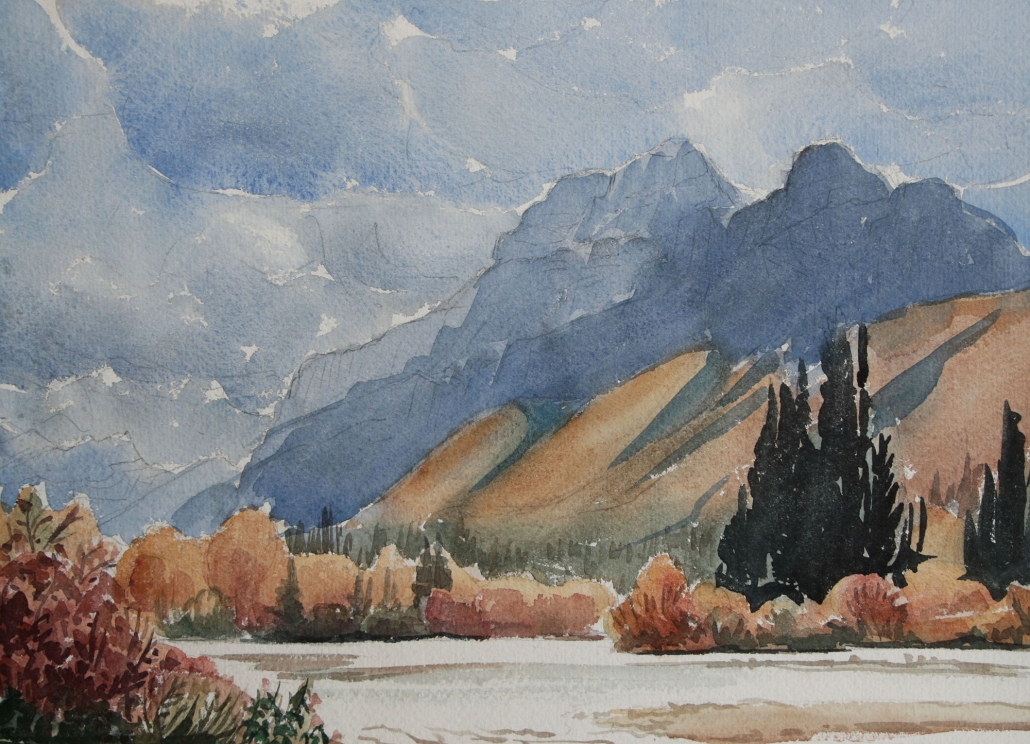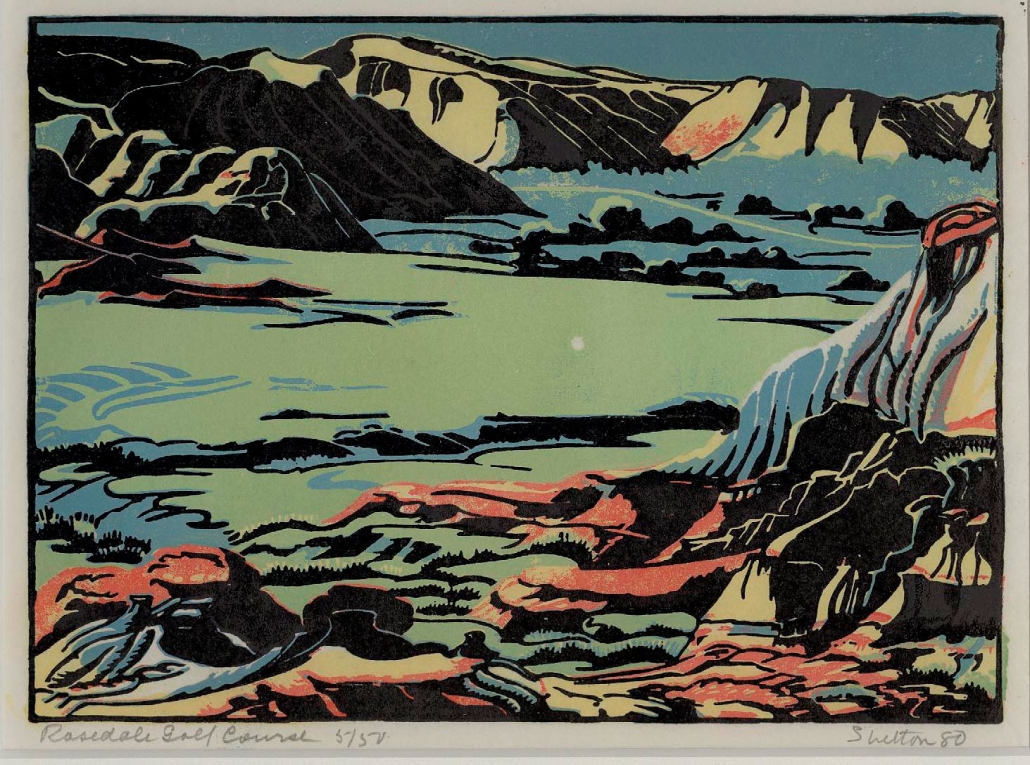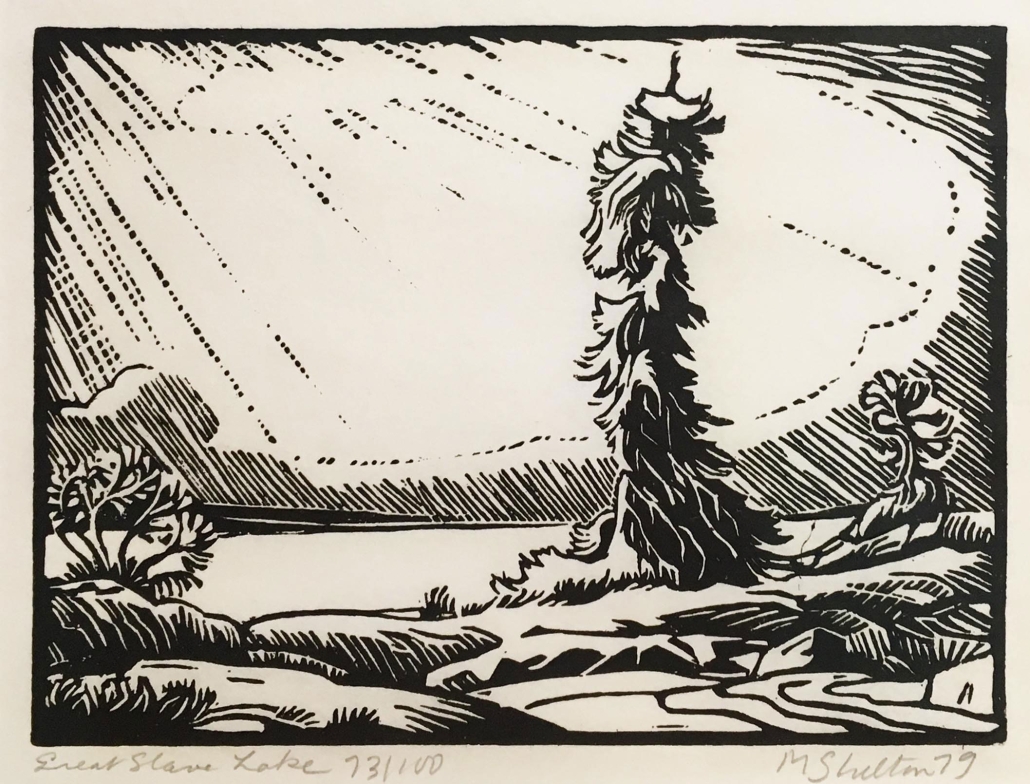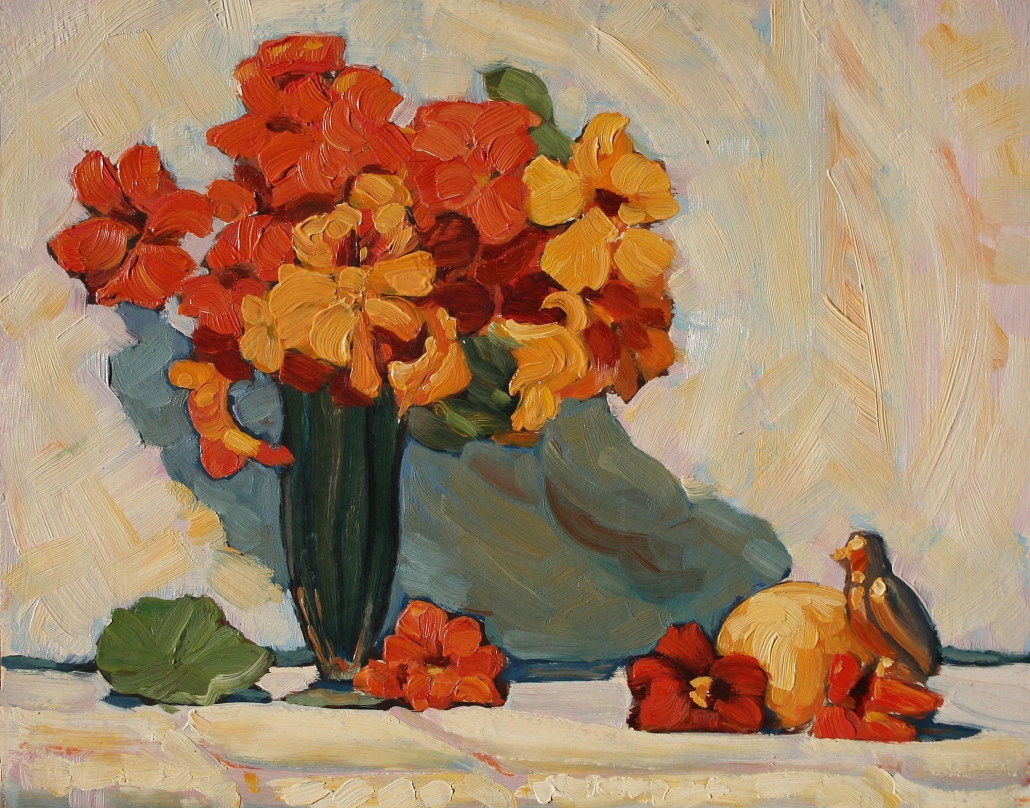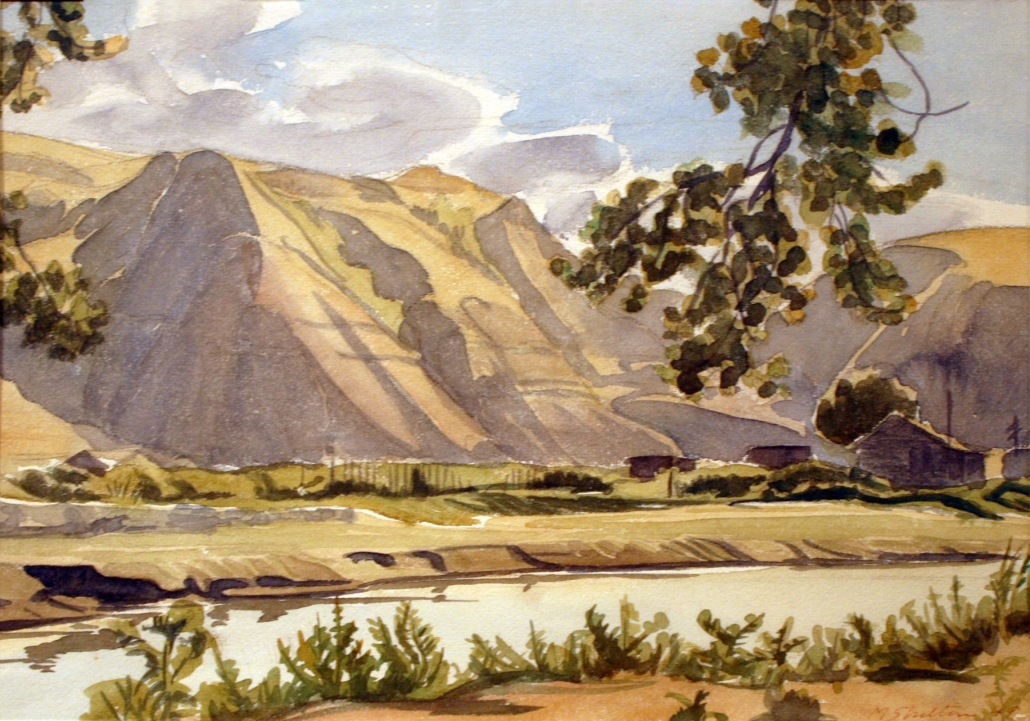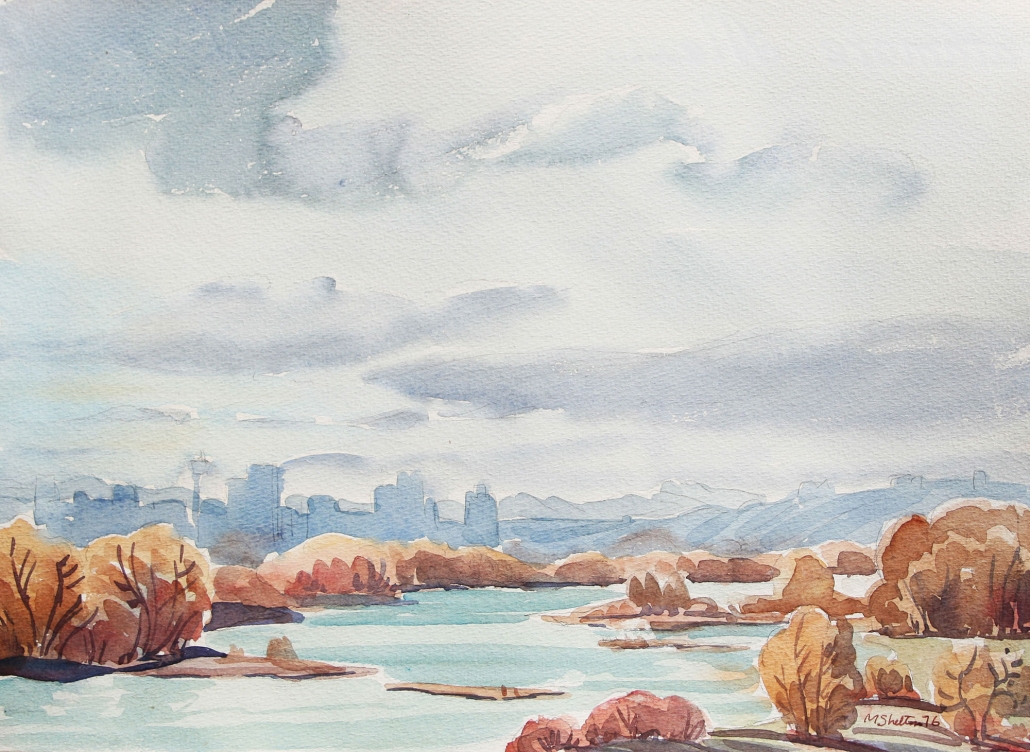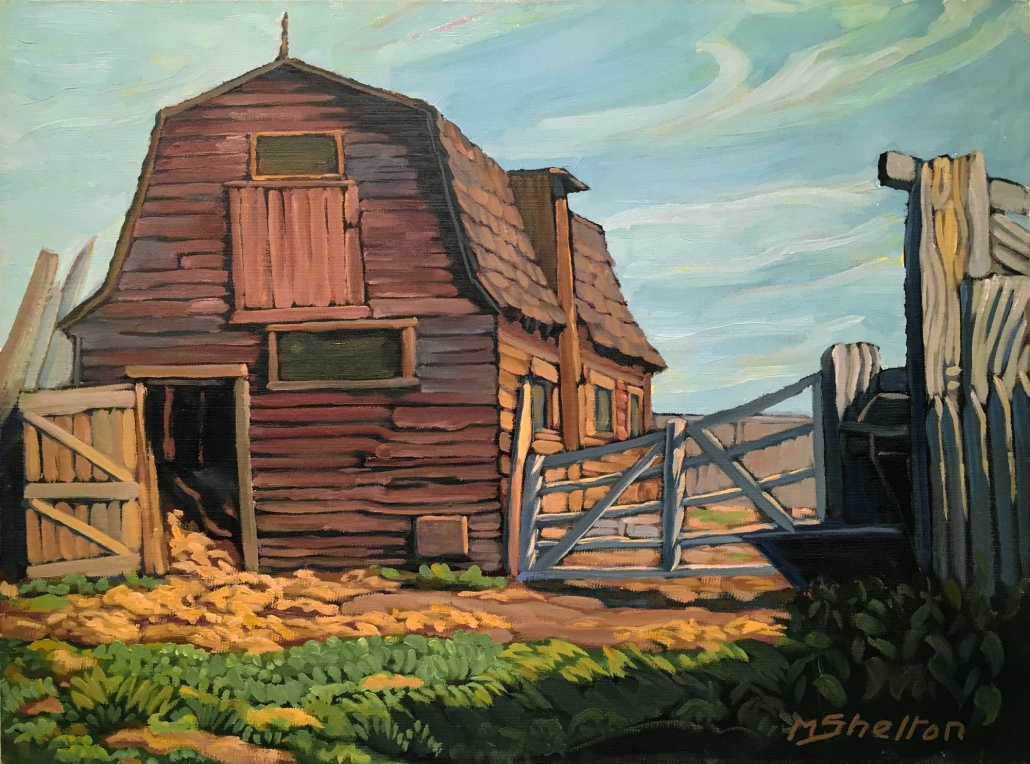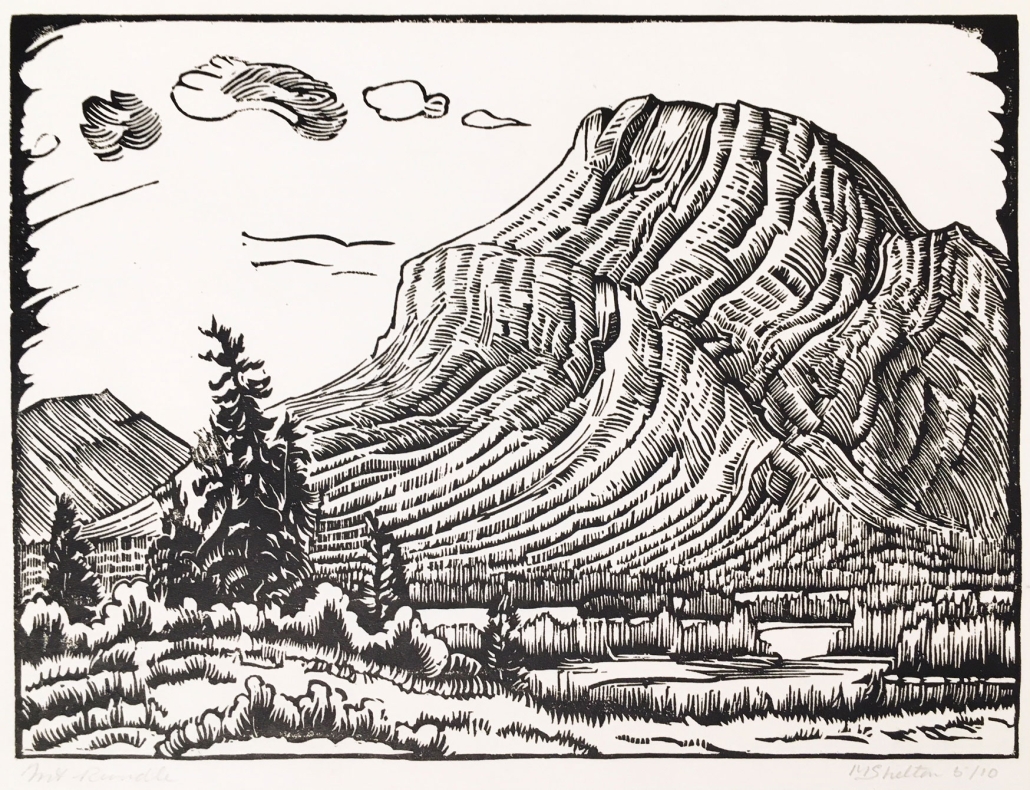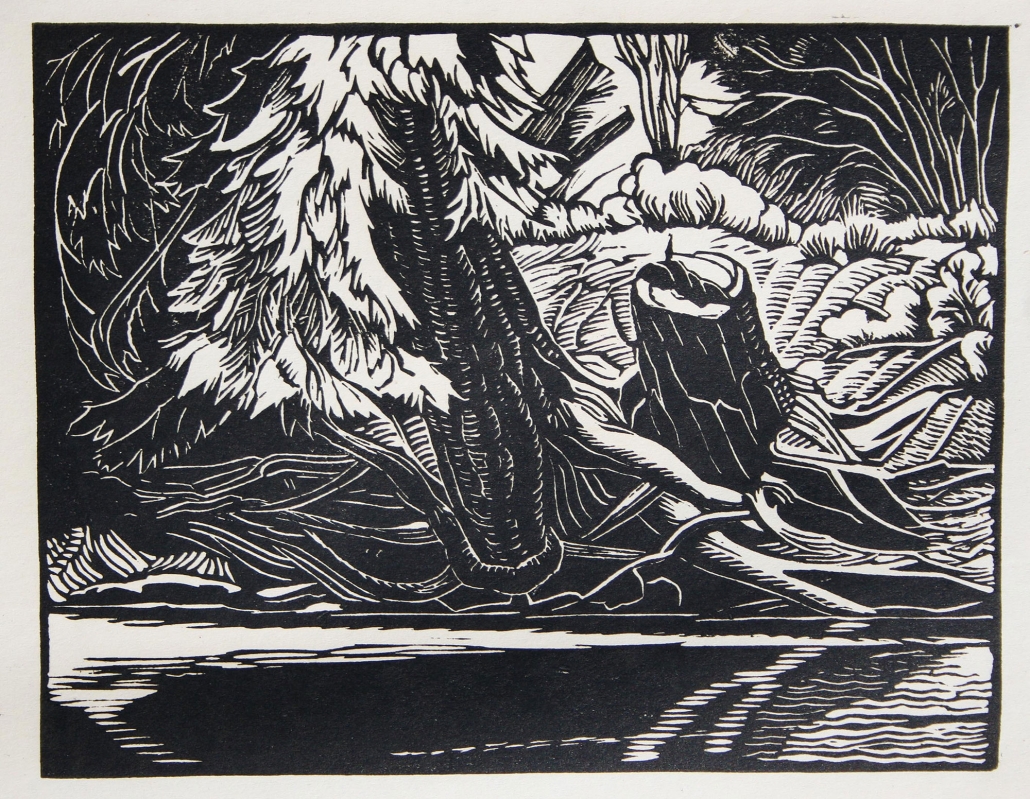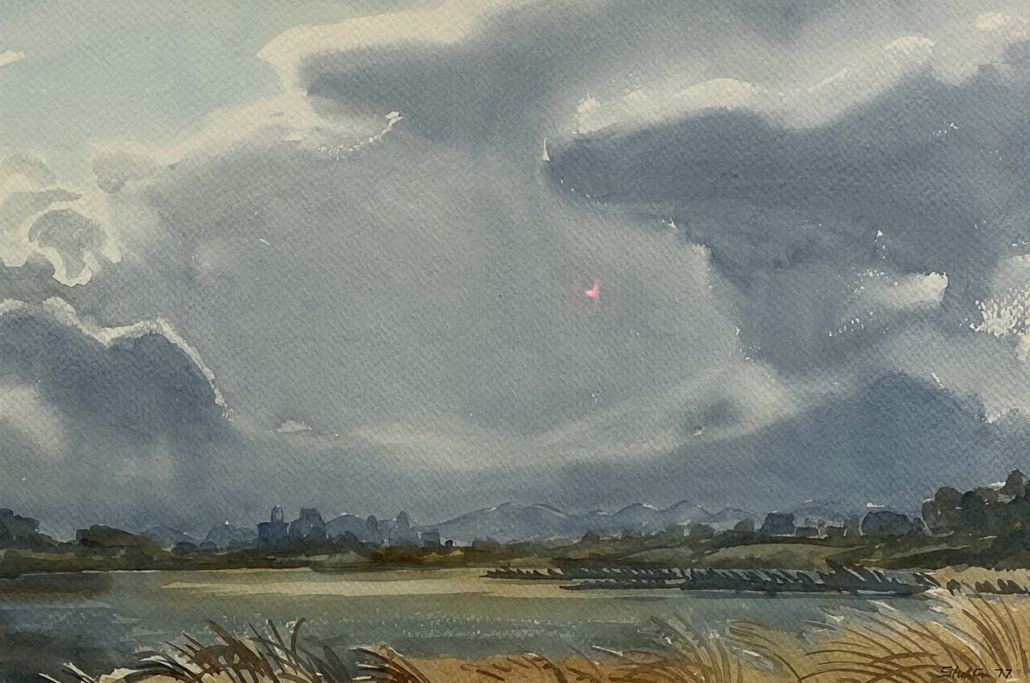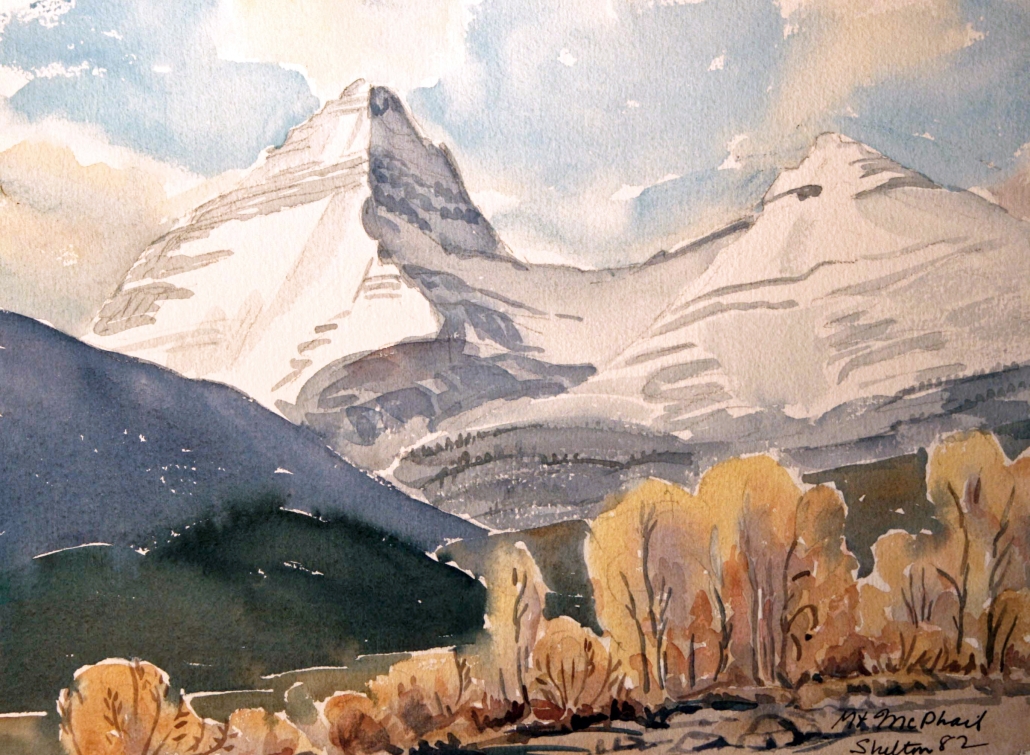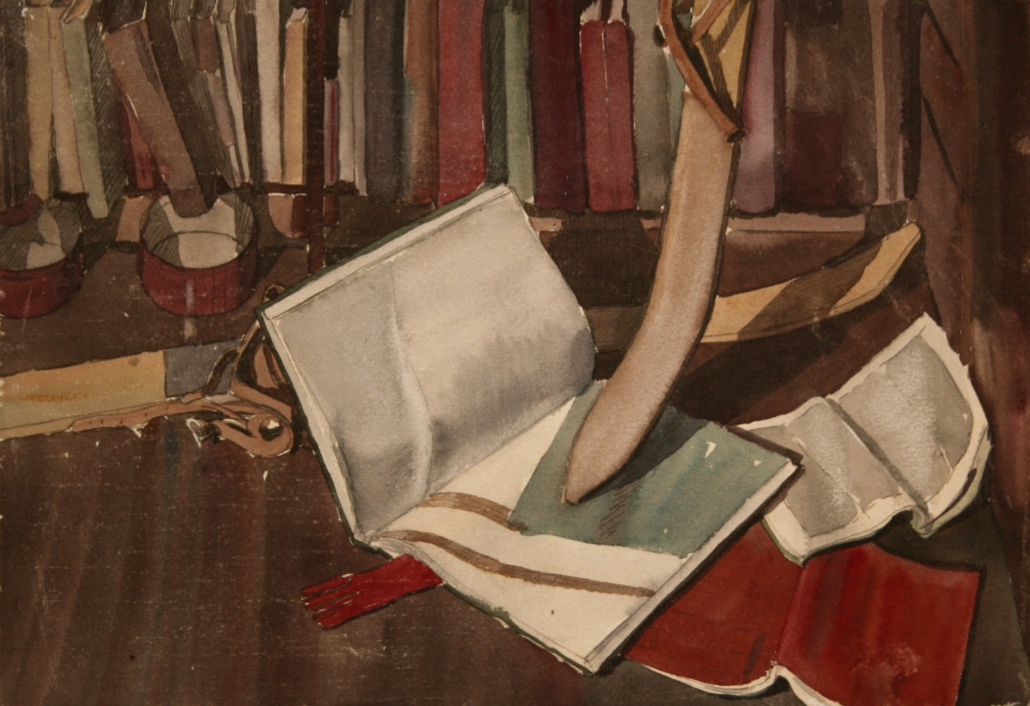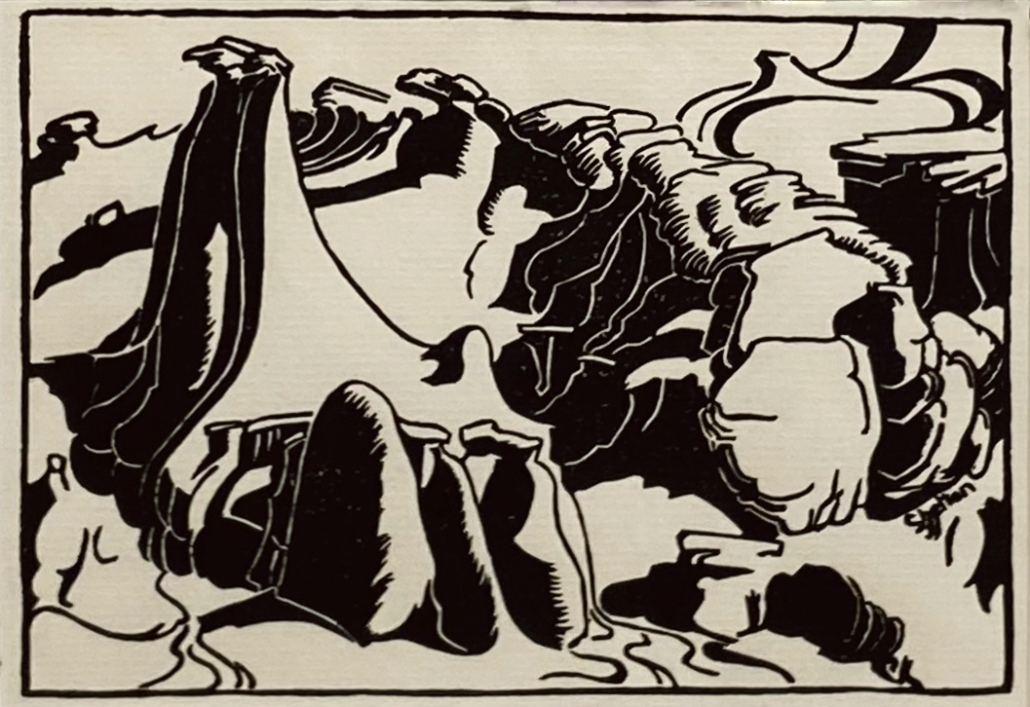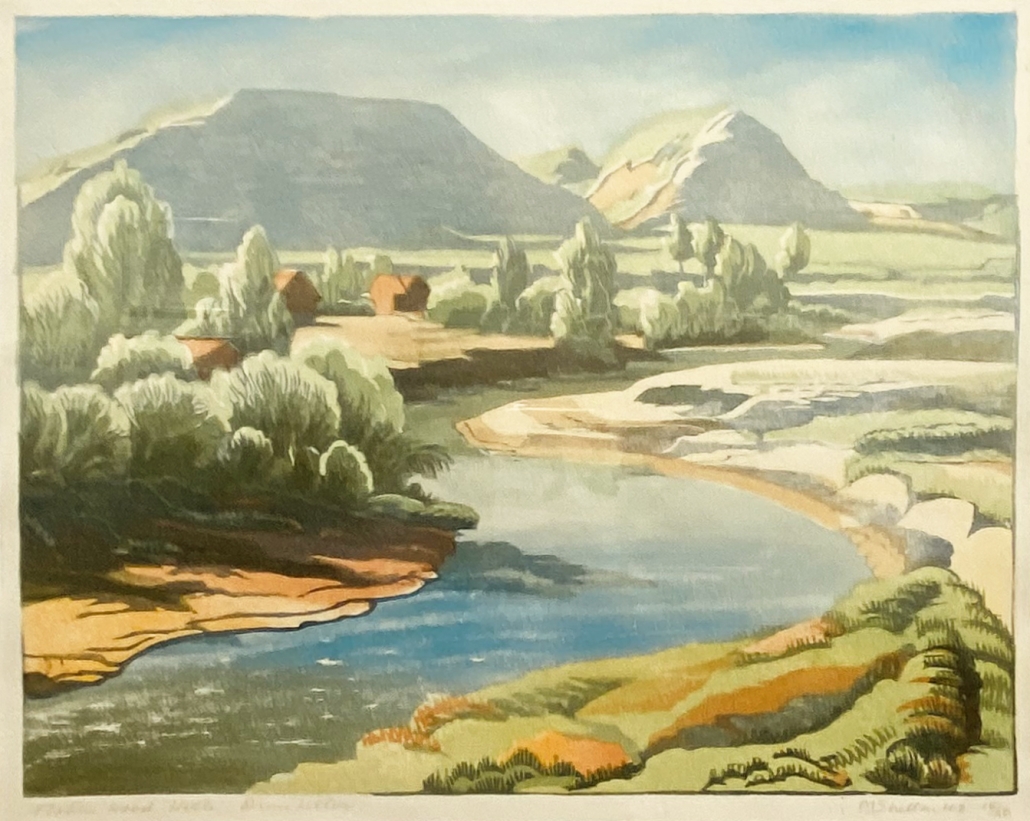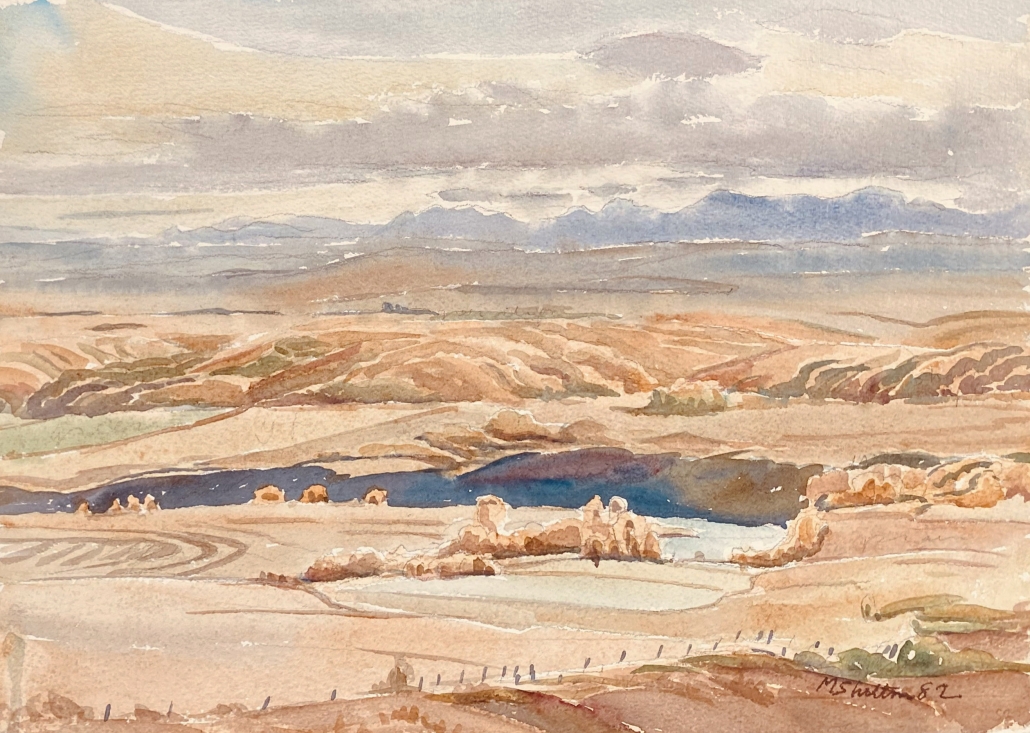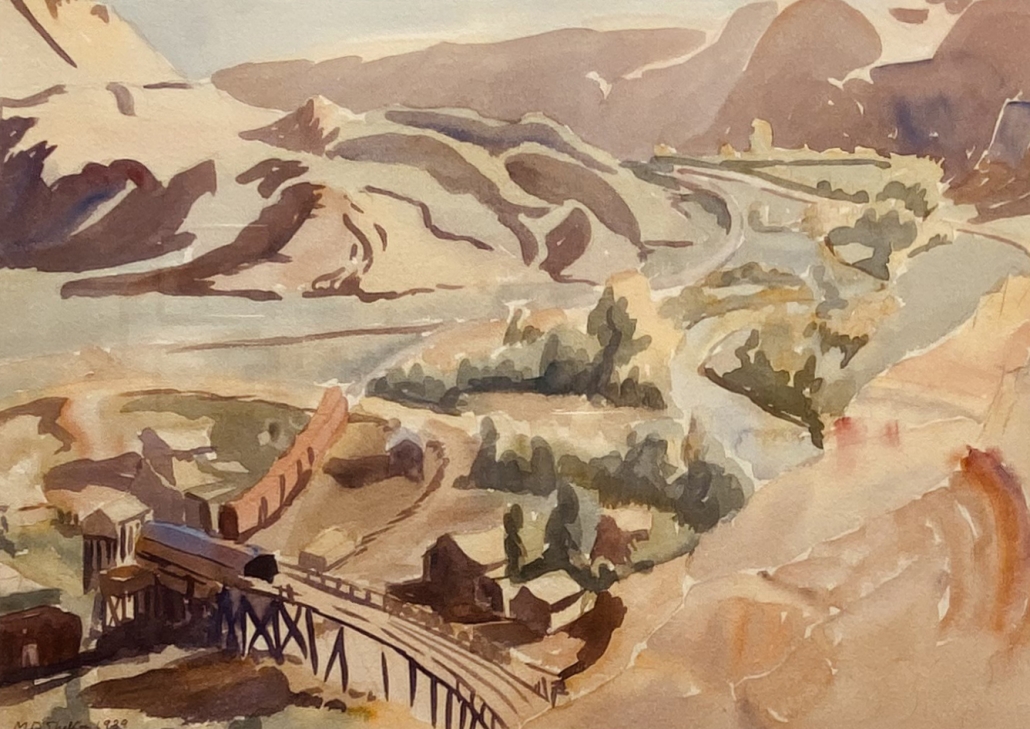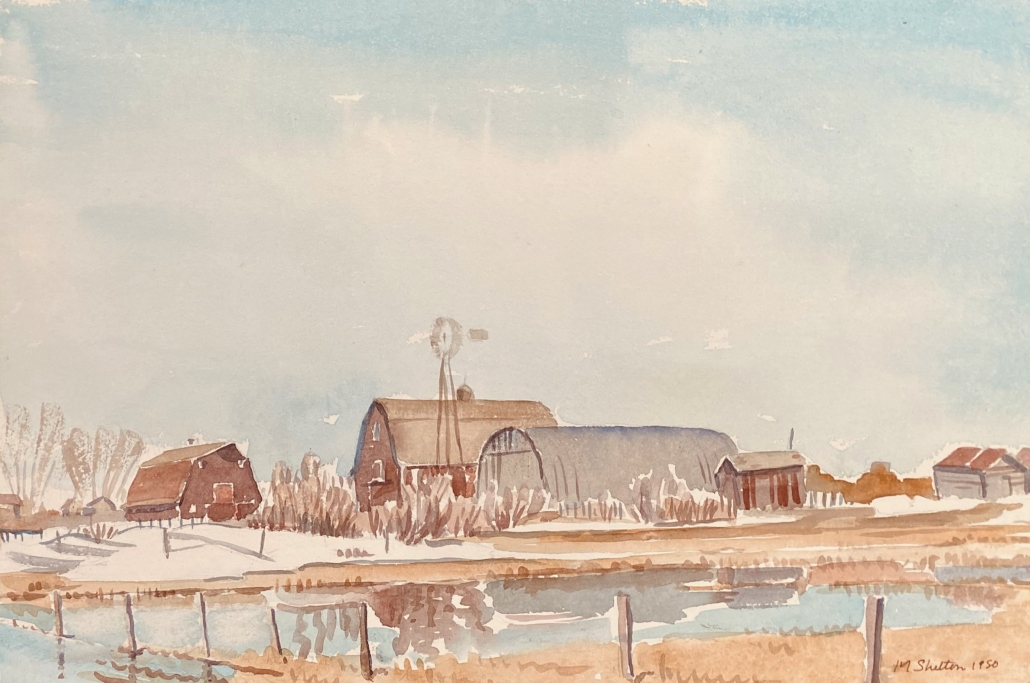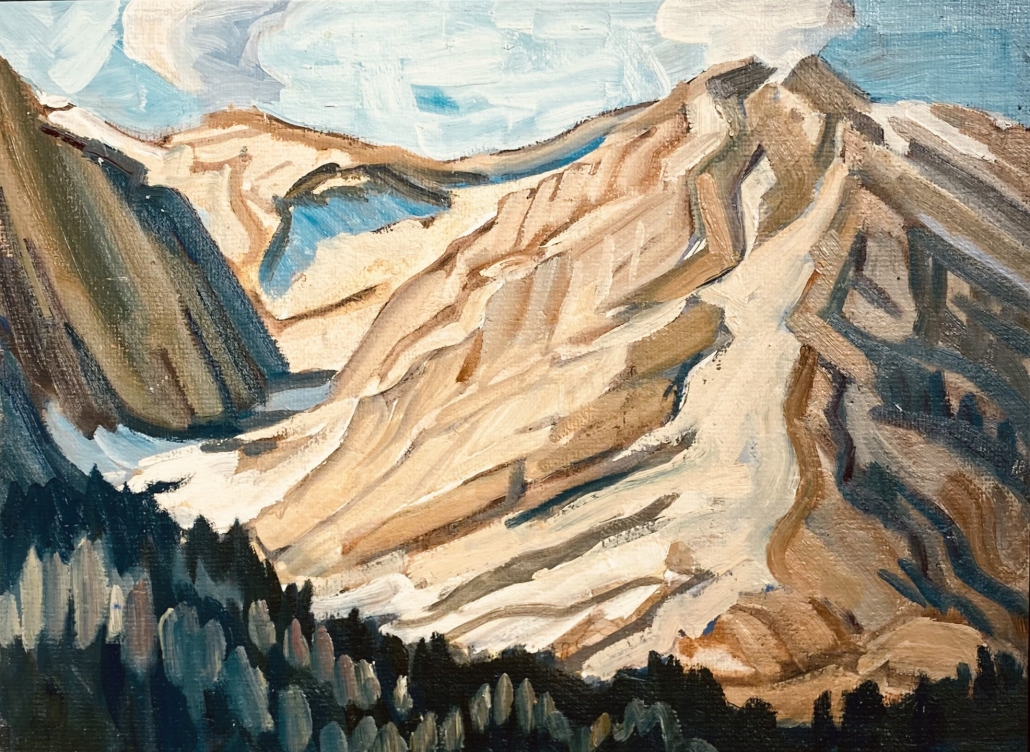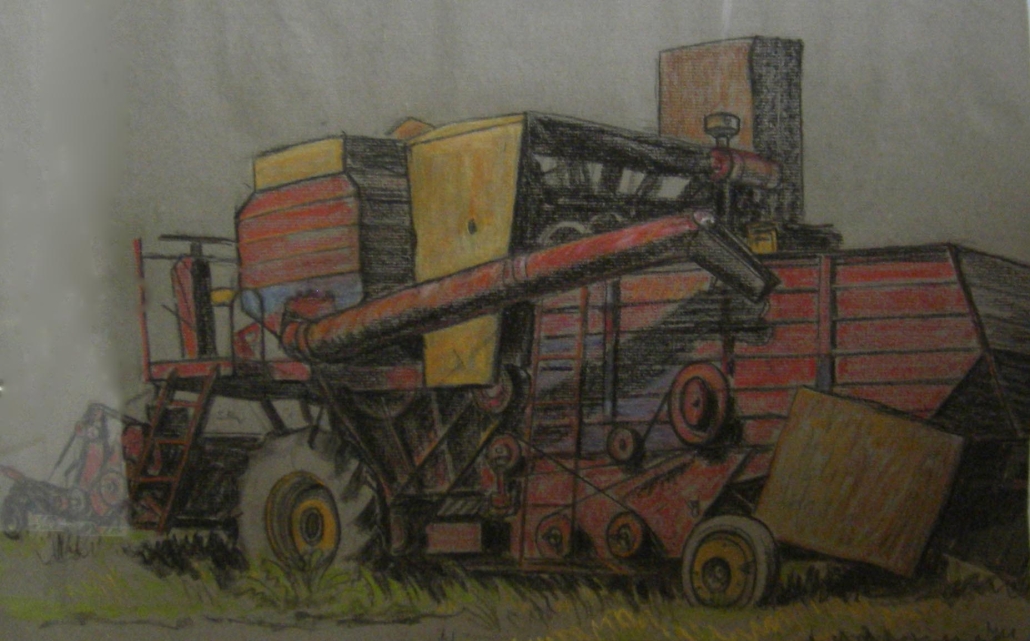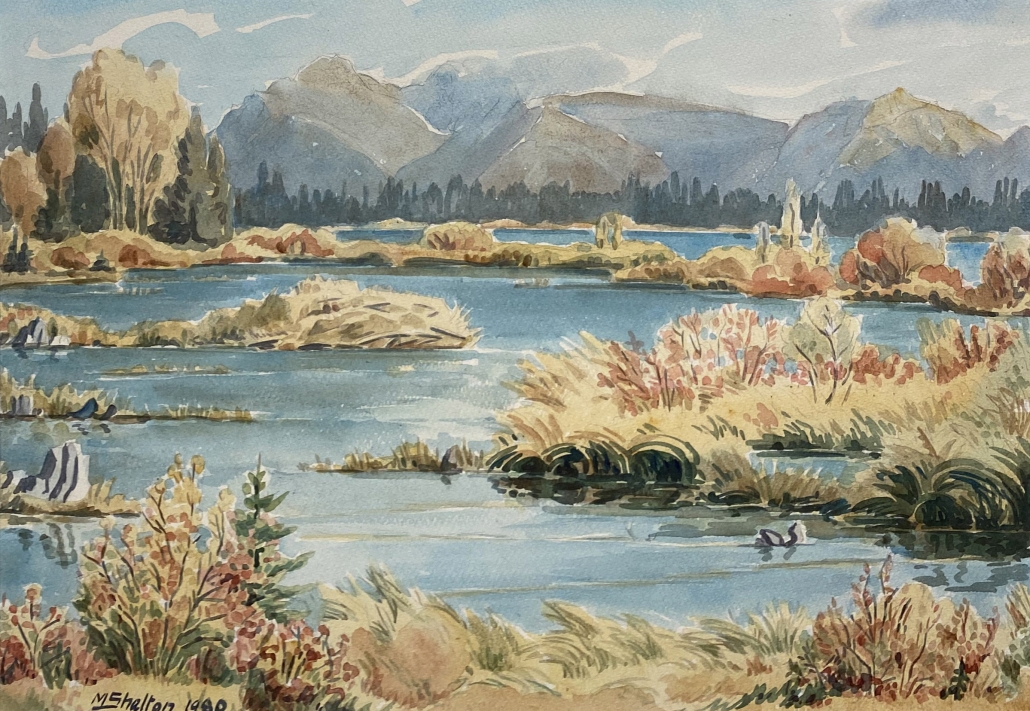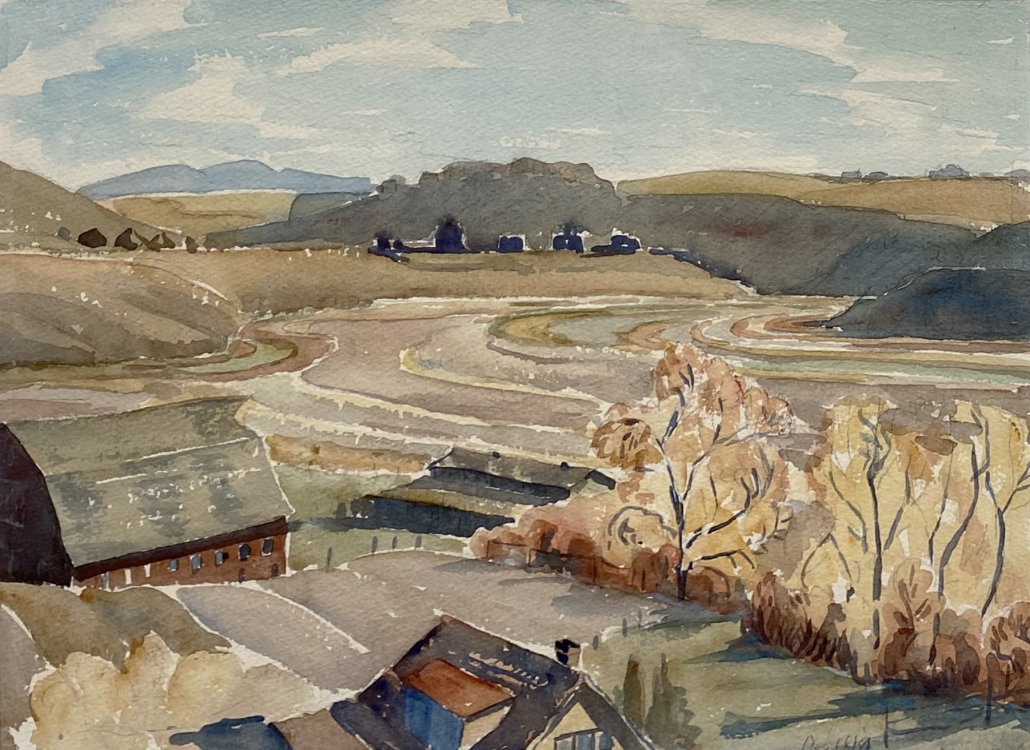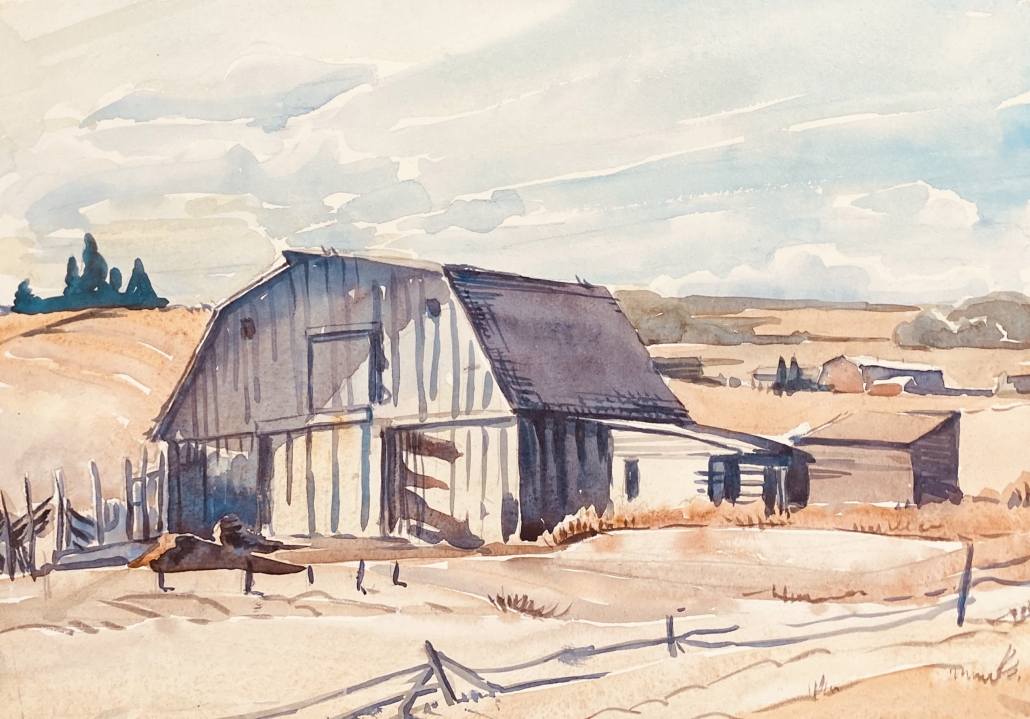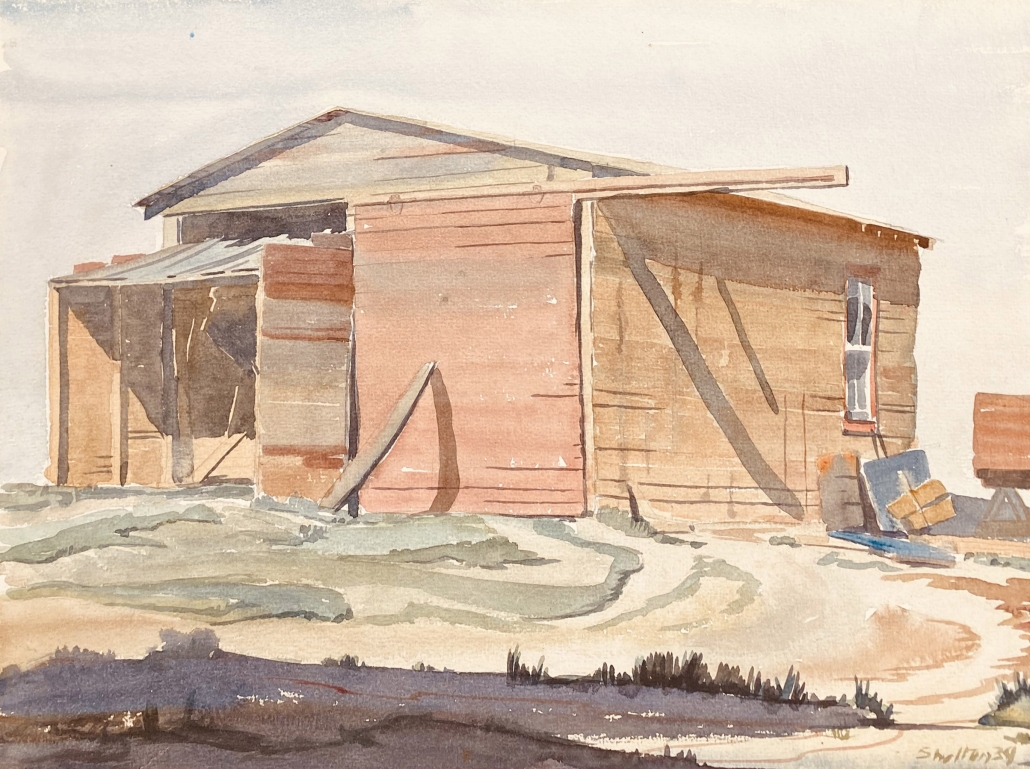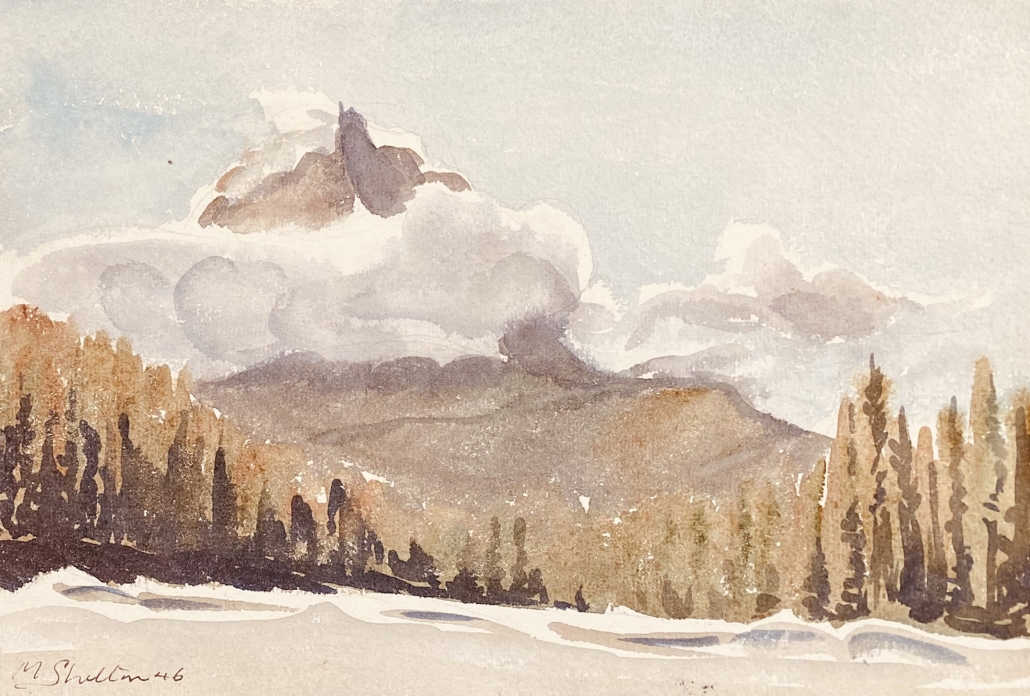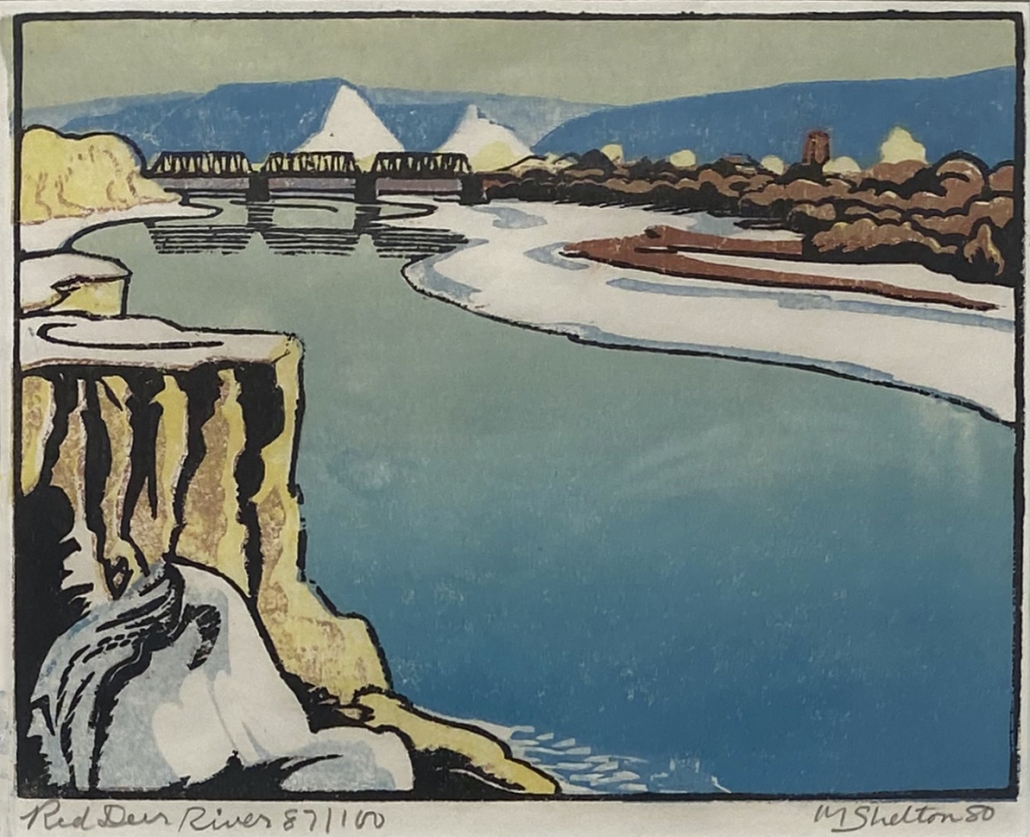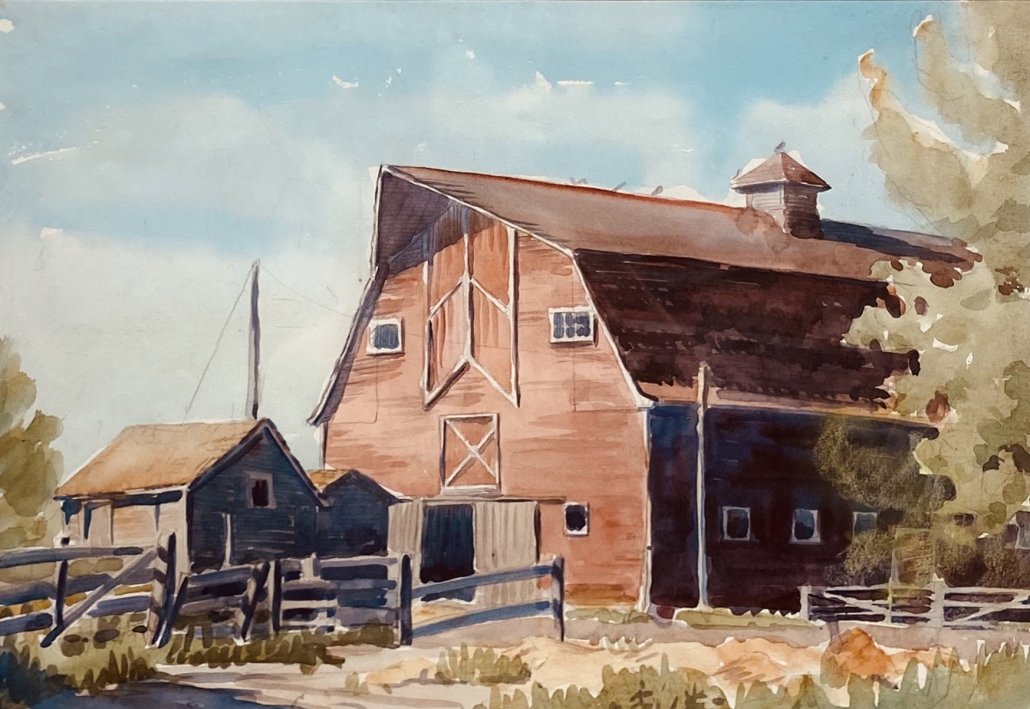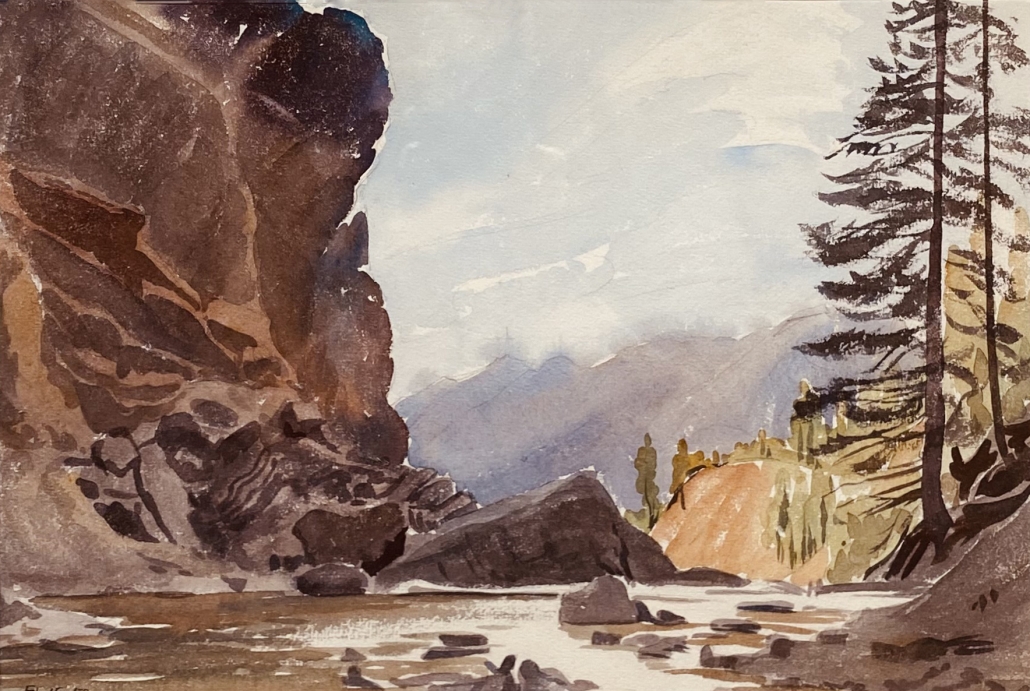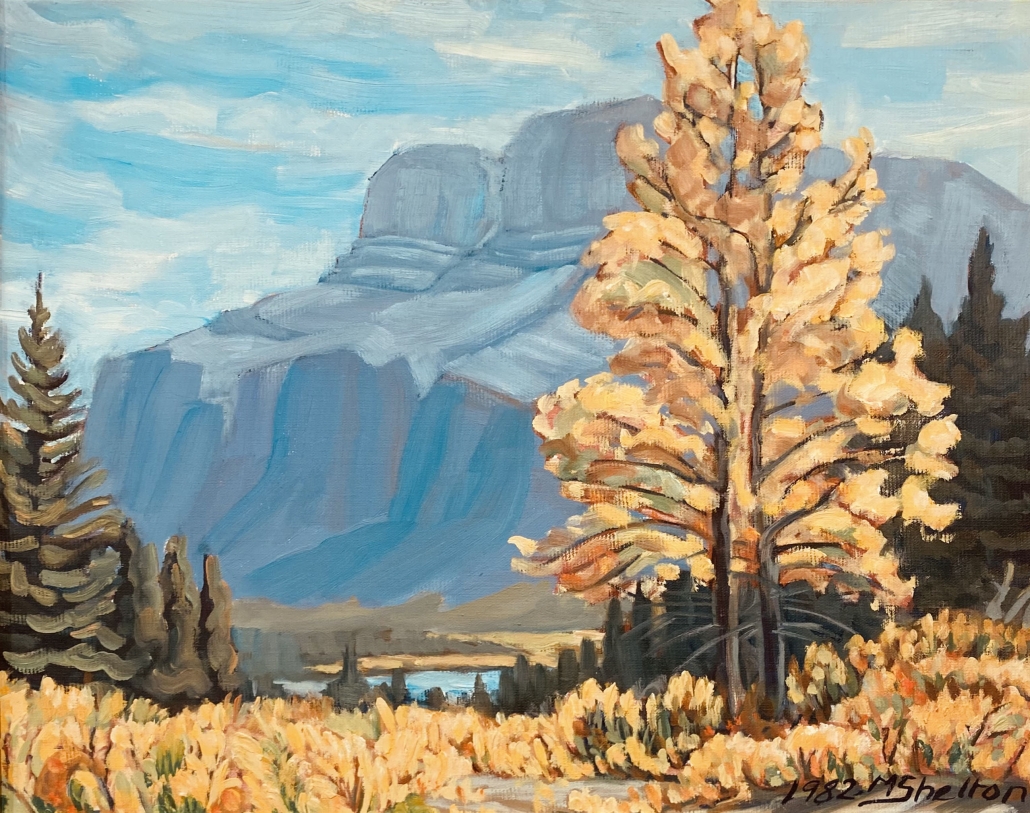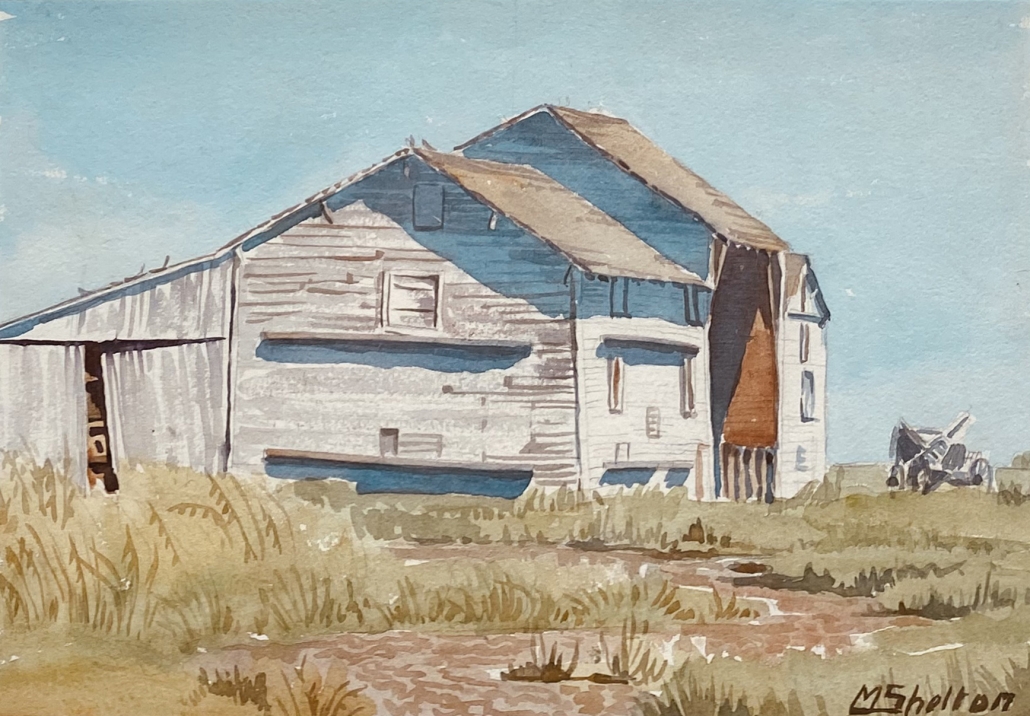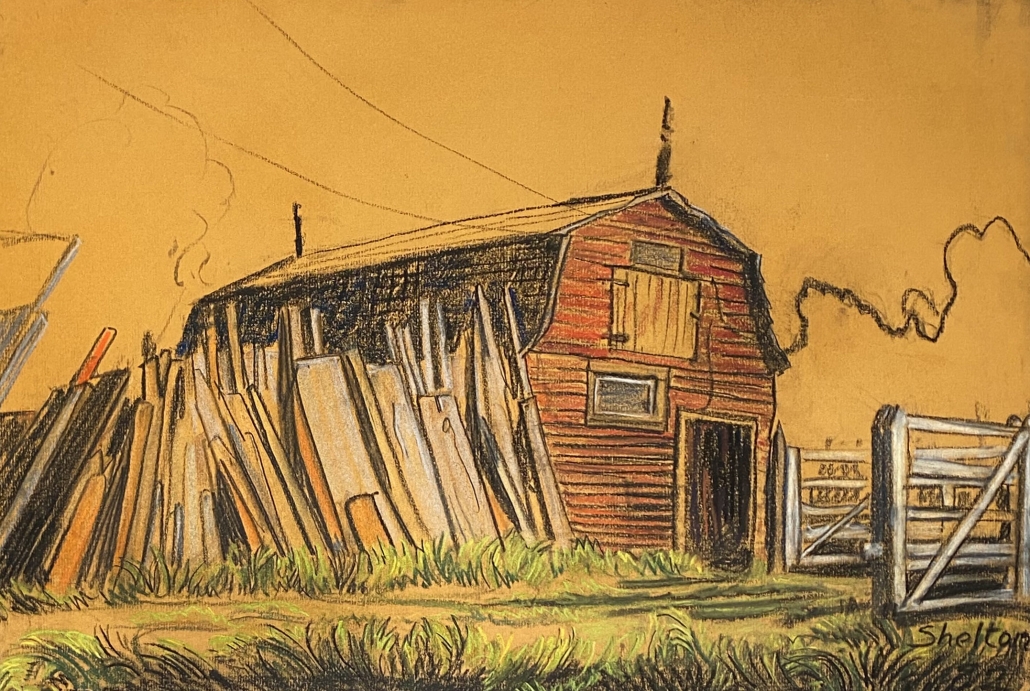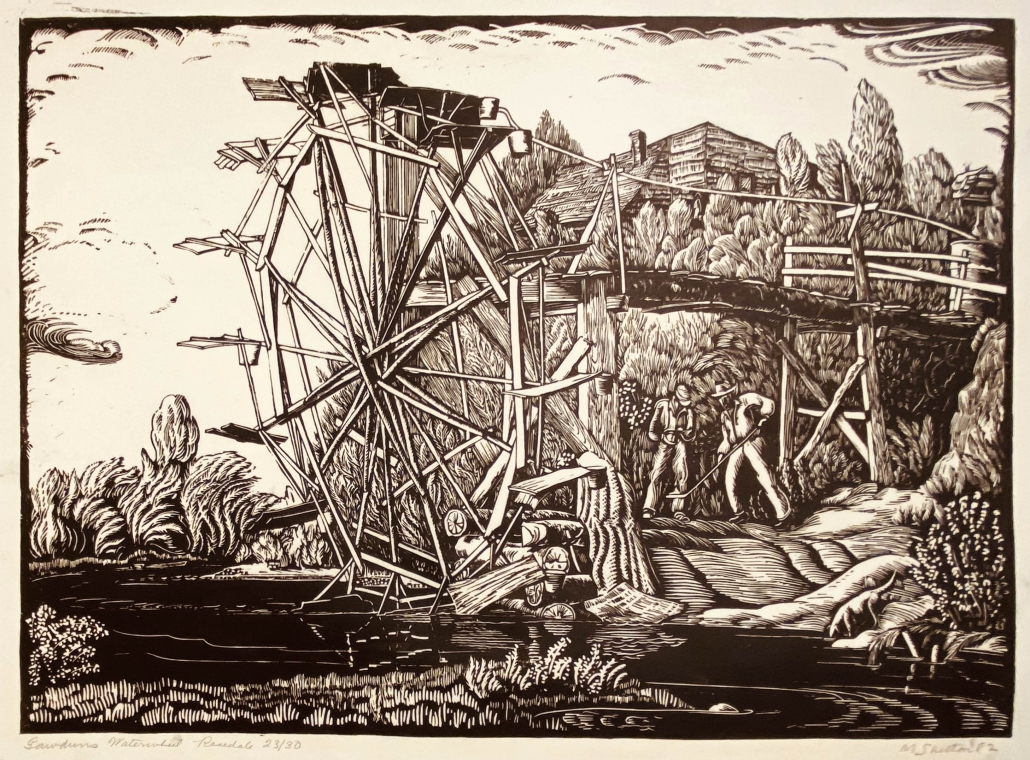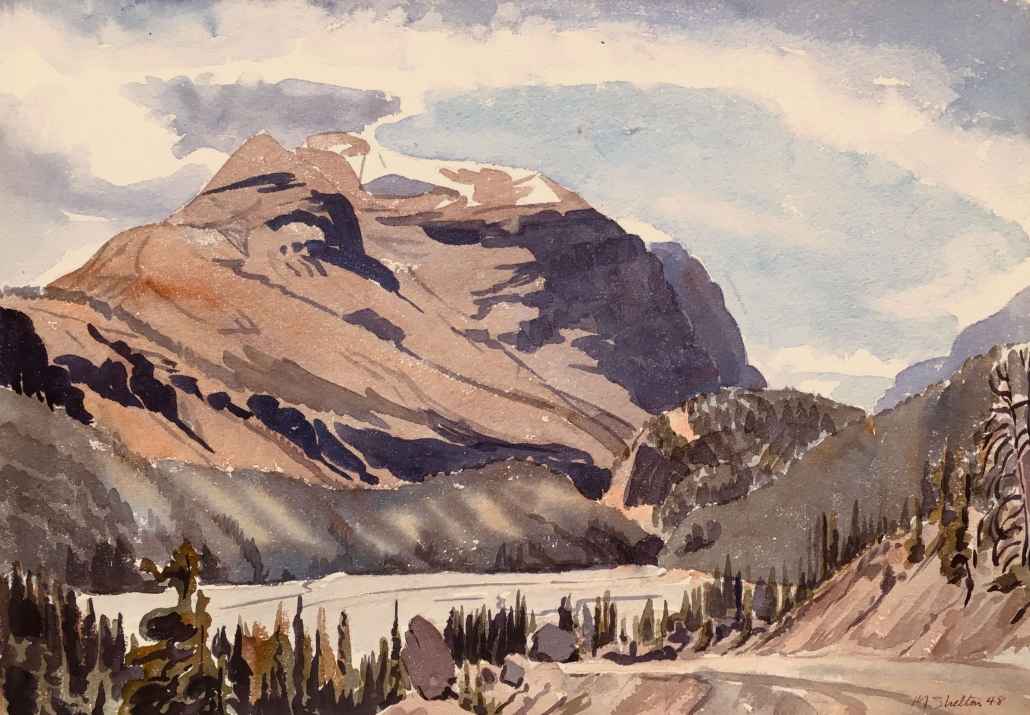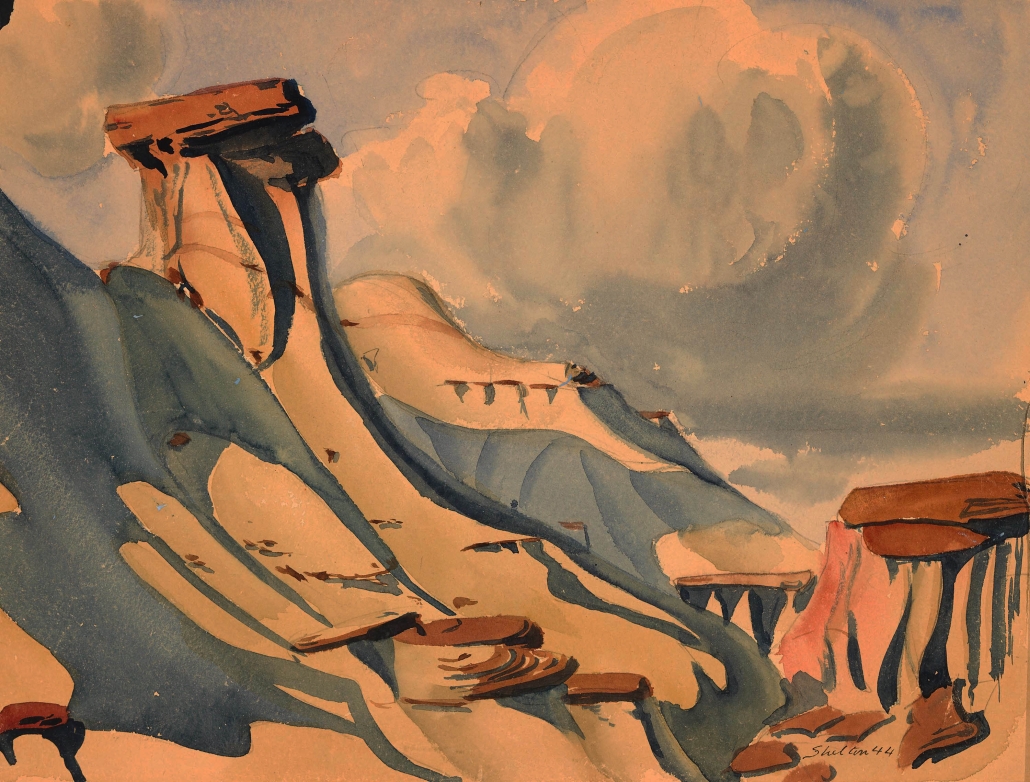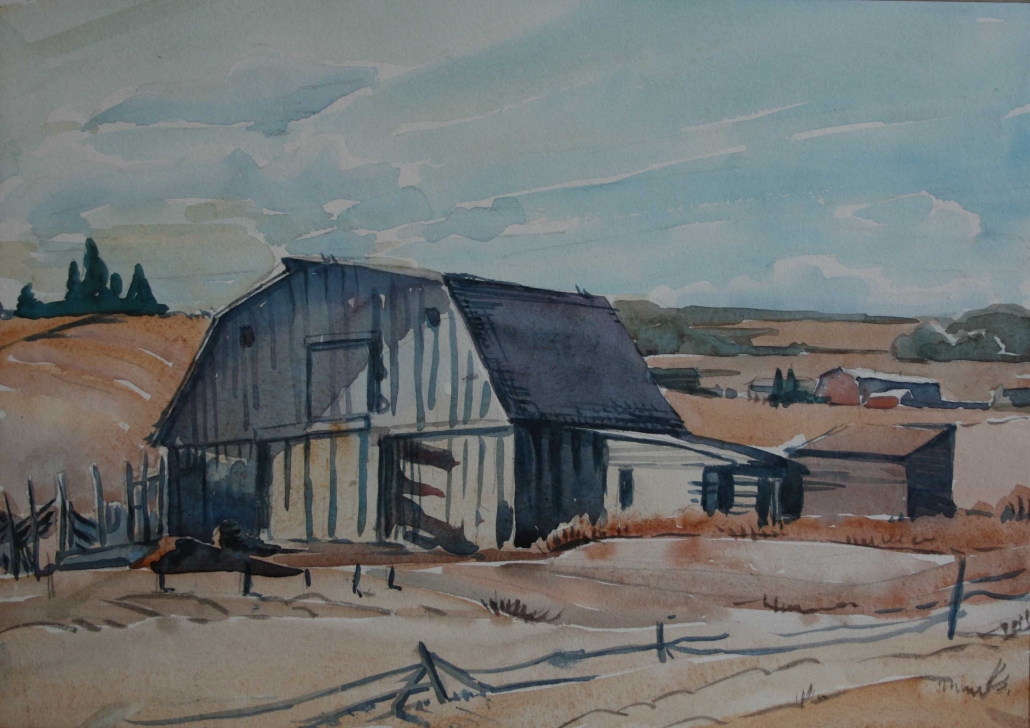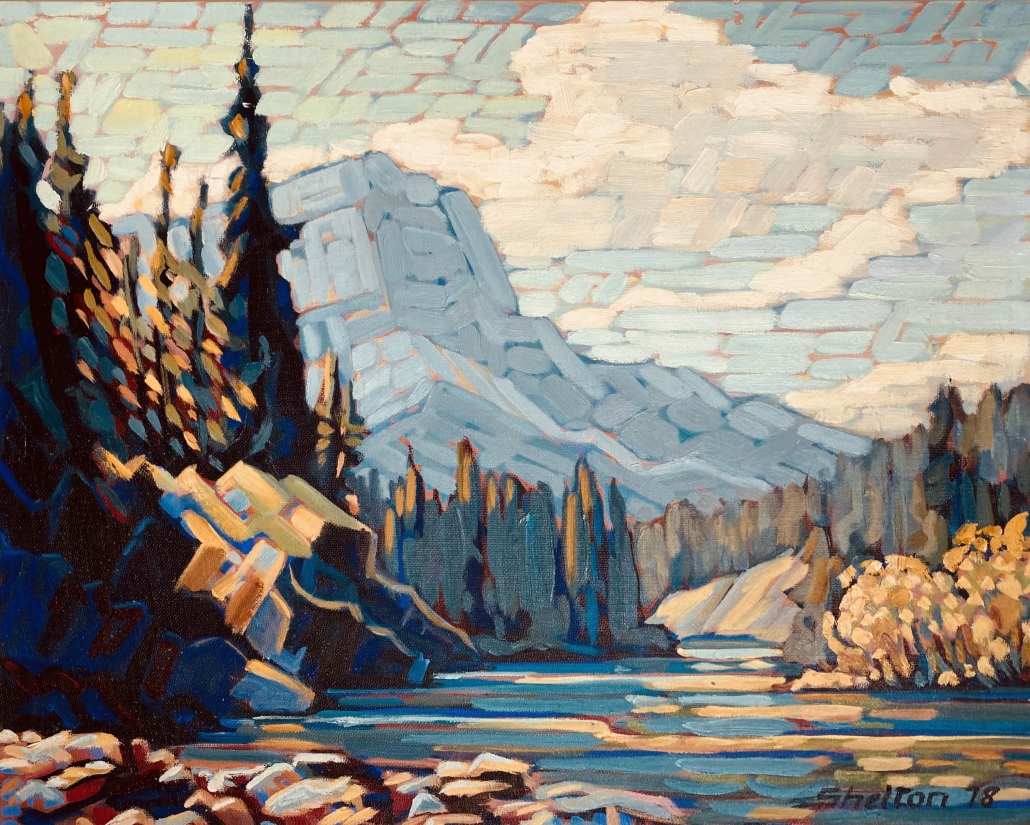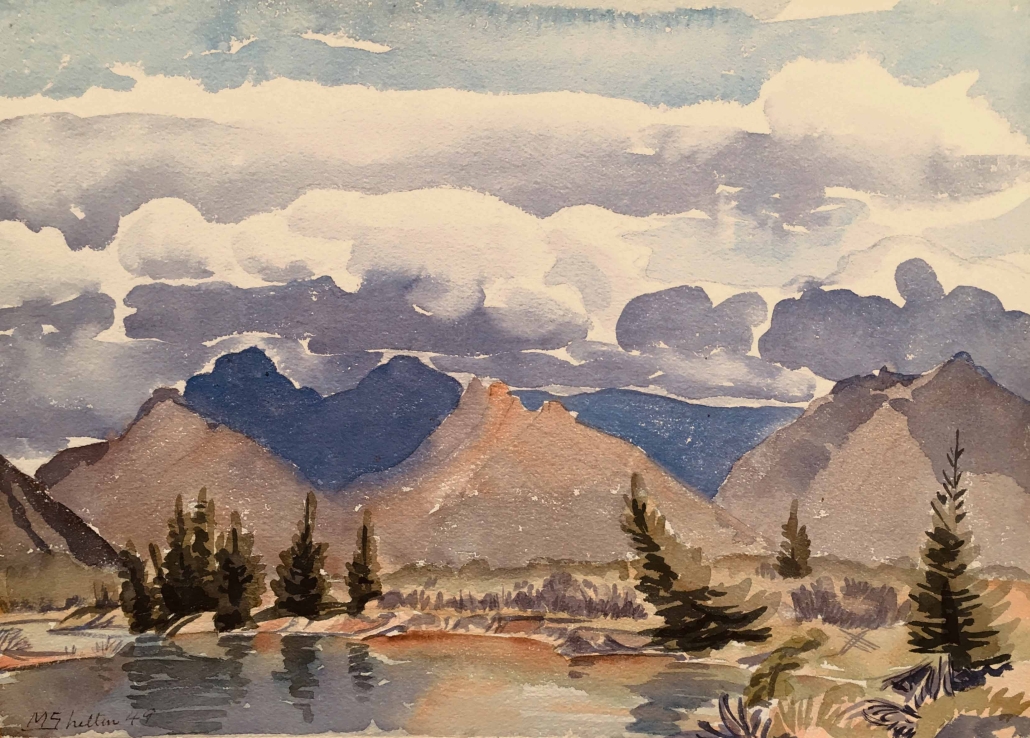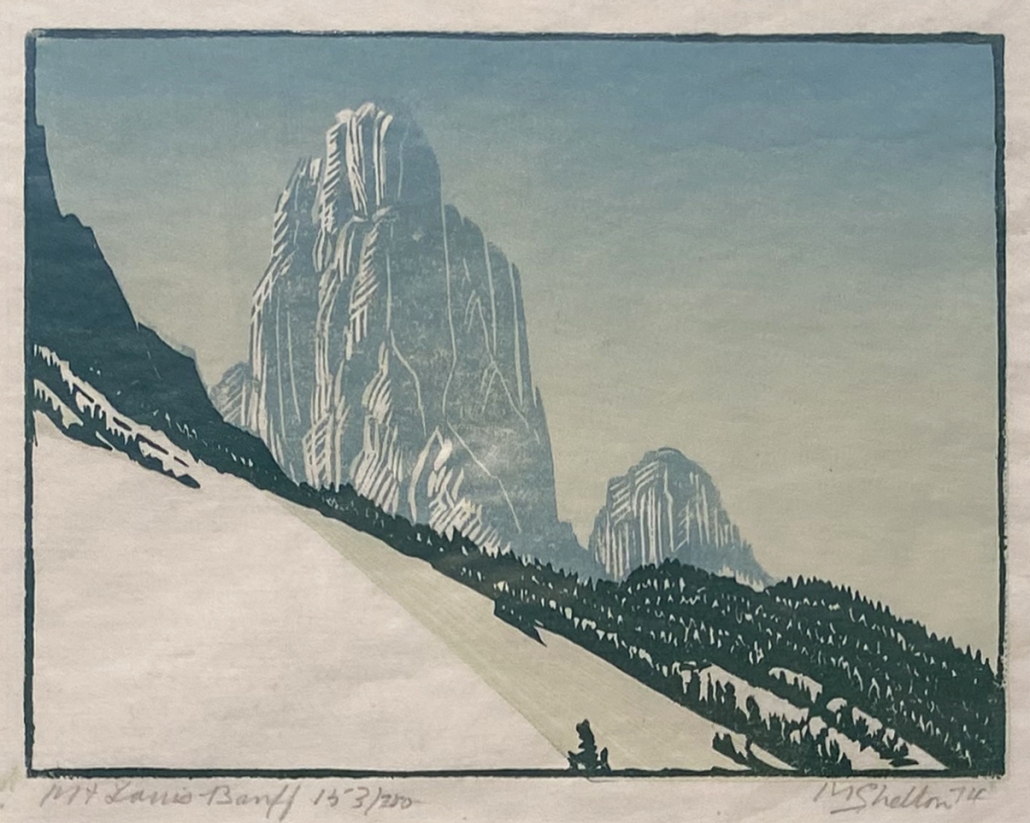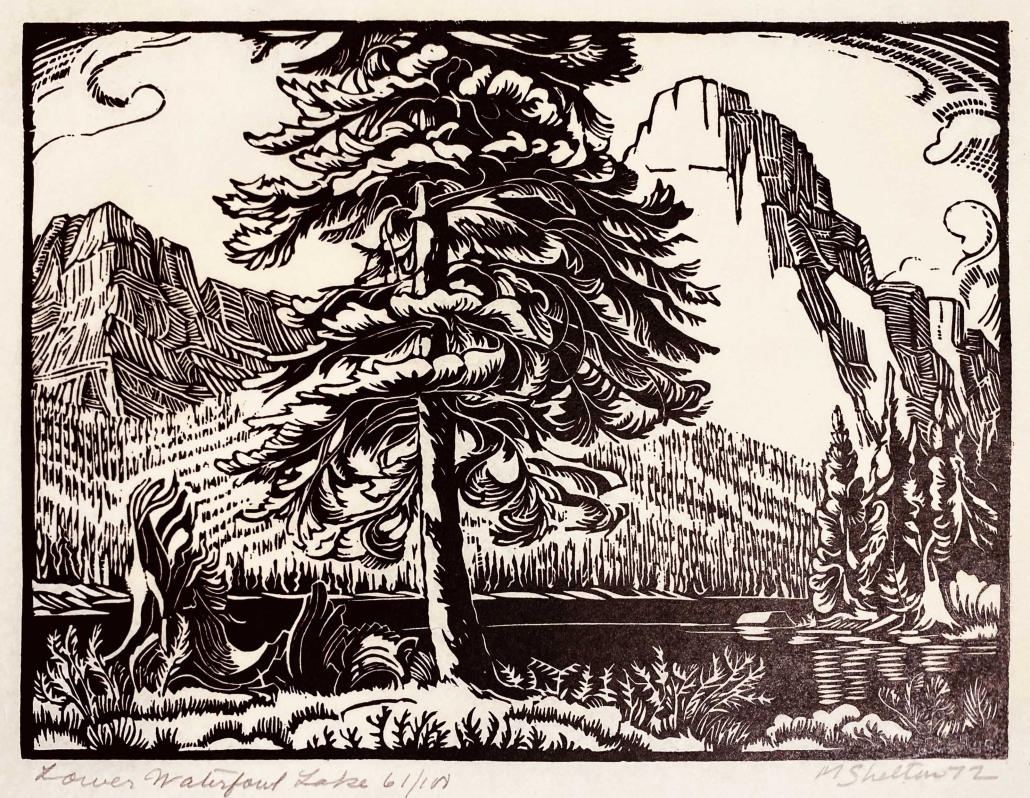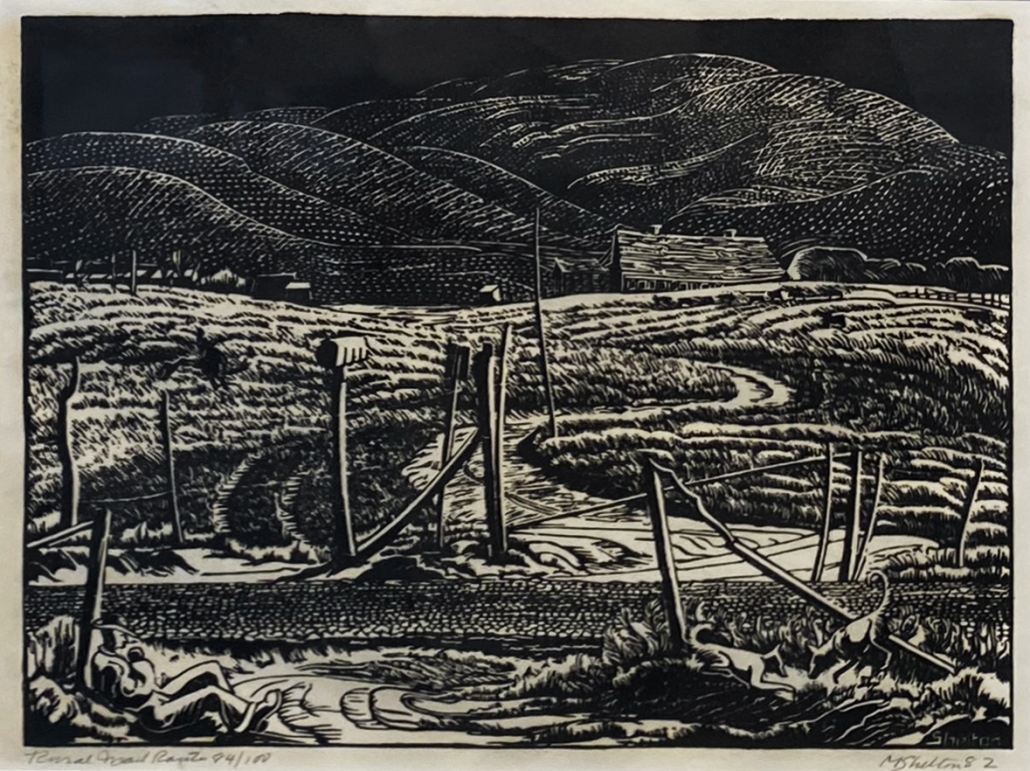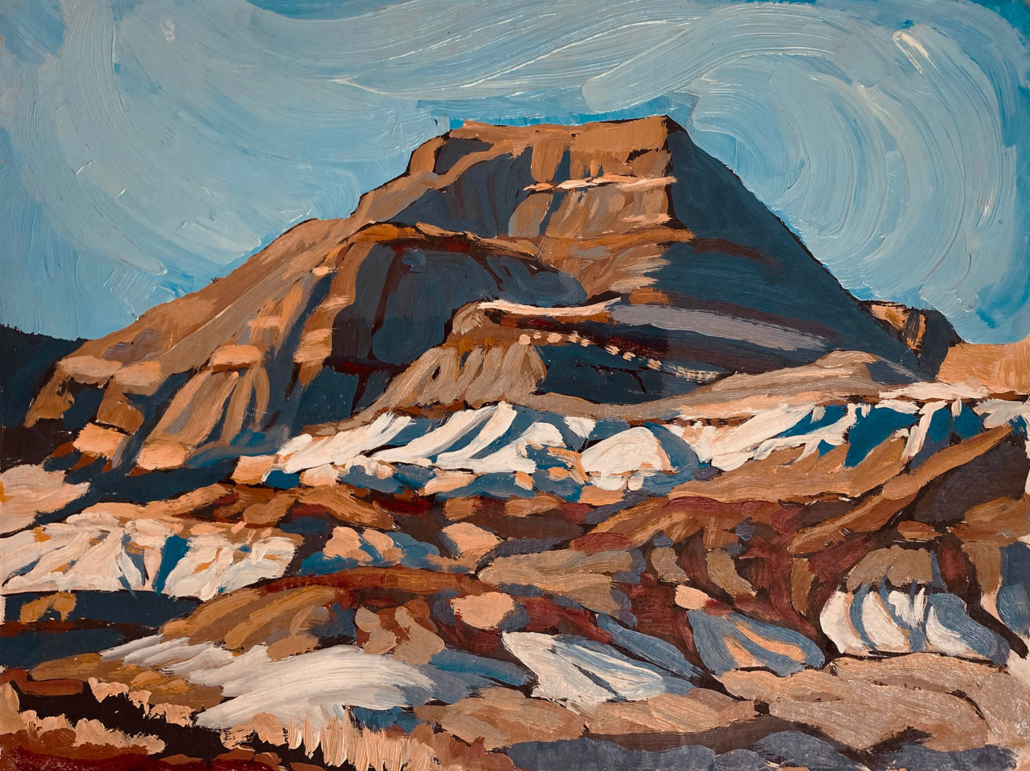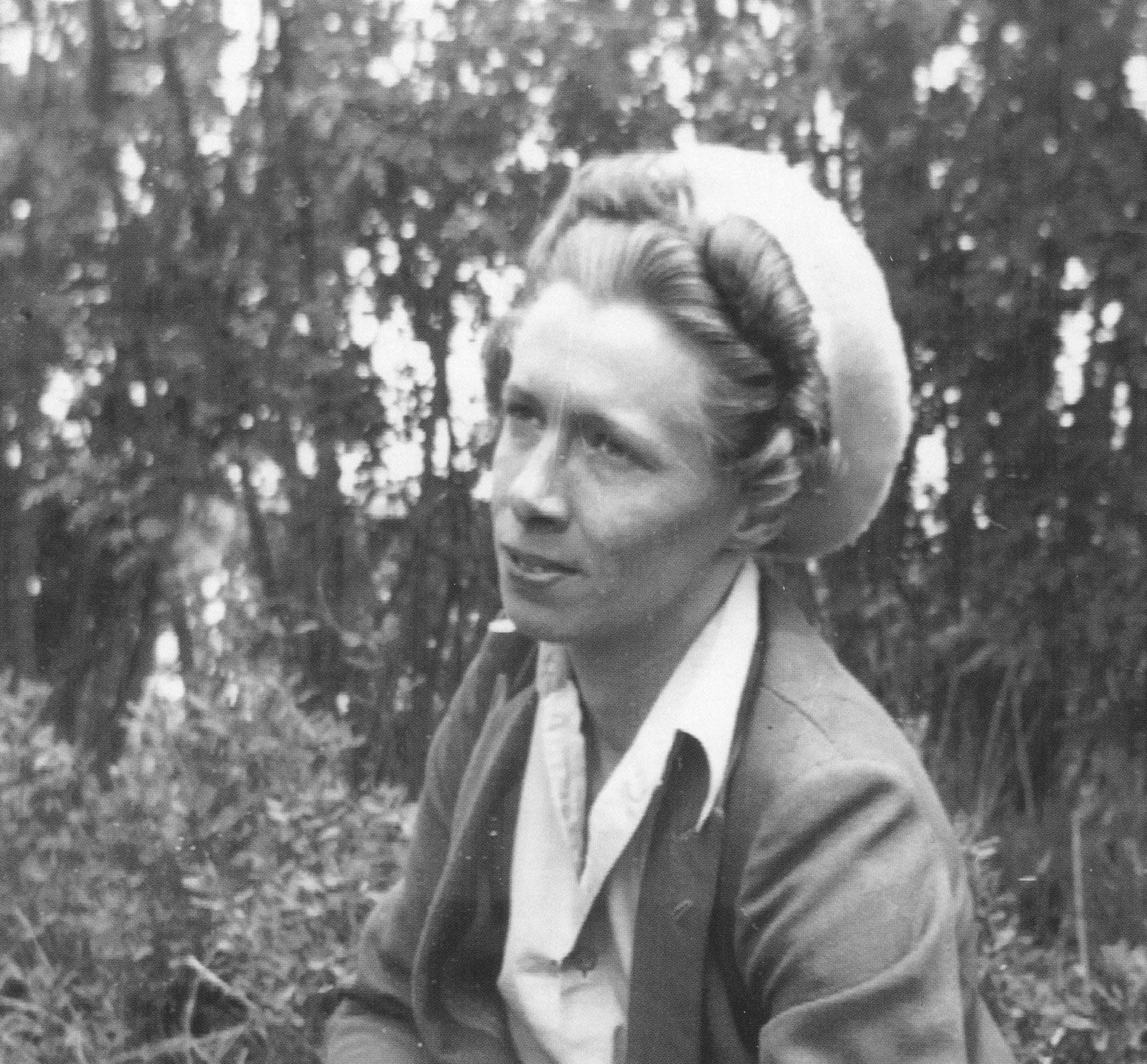Margaret Shelton (1915 – 1984)
In the early history of Alberta art, the name Margaret Shelton looms large. More than just a visual document of our landscape, Shelton’s work conveys a deep attachment to both the land and its people. Though she worked in many mediums including printmaking, watercolour, oil and pastel, much of her art began in a sketchbook with pencil or pen and ink. An excellent draftsman, Shelton revealed a bond with her subject matter that is honest and direct.
Margaret Shelton was born August 15th, 1915 on a farm near Bruce, east of Edmonton. She grew up in the Drumheller valley. From an early age, she began to draw, encouraged by both parents and teachers. Margaret roamed the hills and mine-works, drawing and painting whatever seemed of interest.
Growing up during the Depression in the mining town of Rosedale, AB, Shelton experienced at first hand the hardship of those years. Influences of that period can be found throughout her work – whether in the simplicity of a sepia drawing of a single cup and tea pot, for example, or in a black and white linocut of an abandoned mine, or in an oil painting of the wind swept Rosedale Valley – or even in a watercolour of autumn-coloured trees in the mountains. These early years, too, helped form the artist’s political beliefs and her sympathy for the working man – and her own choice to lead a very simple life devoted to art.
Shelton attended Normal School in Calgary during 1933-34 to become a teacher. During this time she also attended evening classes at the Provincial Institute of Technology and Art (PITA) now known as the Alberta College of Art and Design.
From 1934 to 1943 she attended PITA and the Banff School of Fine Arts on various scholarships, studying with A. C. Leighton, H.G. Glyde, W. J. Phillips, Charles Comfort and others. It was W. J. Phillips who introduced her to the art of Japanese wood block printmaking. During the 1930s and 1940s Shelton exhibited regularly with the Society of Canadian Painter-Etchers and Engravers (CPE), and the Canadian Society of Graphic Art (CSGA). She taught School periodically for a few years and worked briefly as a commercial artist for an advertising agency in Toronto.
The late 1930s and the 1940s constitute her most prolific years, a time when Shelton experienced the new things that shaped her, both personally and politically. She was frequently seen walking or bicycling throughout Southern Alberta and into British Columbia, never without sketchbook and paint box in hand. With a tent strapped to her bicycle, these painting excursions would often last for extended periods of time.
In contrast, the two ensuing decades represented the least productive period for the artist. In 1951, Shelton married Edner Marcellus; and in 1952 her mother died. Then came the birth of her daughter Patricia in 1958, followed three years later by the stroke her husband suffered. These were difficult times that took Shelton away from her art. As a result, for almost 20 years she produced no block prints, and limited her subjects to mostly to what was in her immediate vicinity or to what she had already portrayed. It was during these two decades the 50’s and 60’s, Margaret turned to leather crafts as a means of contributing to family finances.
It was not until 1970, that Margaret returned to printmaking, and painting outdoors more frequently. In the last few year of her life, having been diagnosed with cancer, Margaret switched media and returned to pastel drawing. She died in 1984.
Selected collections
Alberta Foundation for the Arts
Art Gallery of Hamilton
Art Gallery of Alberta
Burnaby Art Gallery
Feckless Collection
Glenbow Museum
Lemington Art Centre
National Gallery of Canada
Nickle Arts Museum
Rosedale Community Association
University of Lethbridge
University of Saskatchewan
Whyte Museum of The Canadian Rockies
and many others.

